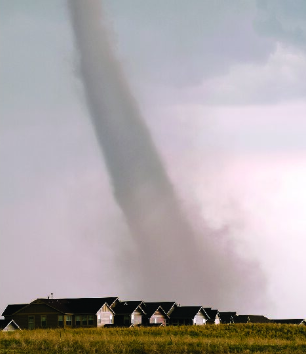

Mitigation Directorate
500 C Street, SW. • Washington, DC 20472
www.fema.gov
Every year, tornadoes, hurricanes, and other extreme windstorms injure and kill people, and damage millions of dollars worth of property in the United States. Even so, more and more people build houses in tornado- and hurricane-prone areas each year, possibly putting themselves into the path of such storms.
Having a shelter, or a safe room, built into your house can help you protect yourself and your family from injury or death caused by the dangerous forces of extreme winds. It can also relieve some of the anxiety created by the threat of an oncoming tornado or hurricane.
Should you consider building a shelter in your house to protect yourself and your family during a tornado or hurricane? The answer depends on your answers to many questions, including:
- Do you live in a high-risk area?
- How quickly can you reach safe shelter during extreme winds?
- What level of safety do you want to provide?
- What is the cost of a shelter?
This booklet will help you answer these and other questions so you can decide how best to protect yourself and your family. It includes the results of research that has been underway for more than 20 years, by Texas Tech University’s Wind Engineering Research Center (WERC) and other wind engineering research facilities, on the effects of extreme winds on buildings.
This booklet also provides shelter designs that will show you and your builder/contractor how to construct a shelter underneath a new house, in the basement of a new house, or in an interior room of a new house, or how to modify an existing house to add a shelter in one of these areas. These shelters are designed to protect you and your family from the high winds expected during tornadoes and hurricanes and from flying debris, such as wood studs, that tornadoes and hurricanes usually create.
The National Association of Home Builders (NAHB) Research Center has evaluated these designs for construction methods, materials, and costs. Engineers at Texas Tech University have confirmed the design requirements for the expected forces from wind pressure and the impact of typical flying debris. The shelters are designed with life safety as the primary consideration.

